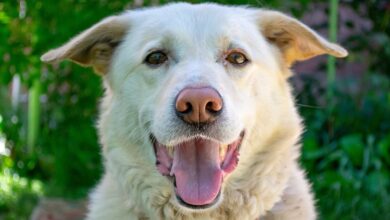Canine Bloat: The Silent Threat to Labrador Retrievers
Safeguard your dog by learning preventative measures

Behind the joyful disposition of Labradors and Retrievers lies a silent threat known as canine bloat, a potentially life-threatening condition that can strike our dogs without warning. Here, we delve into the intricacies of bloat, exploring its causes, symptoms, dangers, and preventive measures to safeguard these cherished canine companions.
The Mystery of Canine Bloat
Canine bloat, also known as gastric dilatation-volvulus (GDV) or gastric torsion, is a severe medical emergency characterized by the rapid distension and twisting of the stomach. This twisting cuts off blood flow to the stomach and surrounding organs, leading to tissue damage, shock, and potentially fatal complications if left untreated. While the exact cause of bloat remains elusive, several factors are believed to contribute to its development in Labradors:
Anatomy:
Labradors, like other deep-chested breeds, have anatomical features that predispose them to bloat. Their narrow thoracic cavity and loose abdominal ligaments allow the stomach to become distended and susceptible to twisting.
Dietary Factors:
Rapid consumption of large meals, particularly high-carbohydrate diets, or foods high in fermentable carbohydrates, may increase the risk of bloat in Labradors. Swallowing excessive air while eating or drinking can also contribute to gastric distension.
Behavioural Factors:
Labradors are known for their enthusiastic eating habits and tendency to gulp down food without chewing thoroughly. Engaging in vigorous exercise or intense activity immediately before or after eating can exacerbate the risk of bloat by promoting gastric distension.
Genetics:
While the role of genetics in predisposing Labradors to bloat is not fully understood, certain genetic factors may increase susceptibility to the condition. Dogs with a family history of bloat or related conditions may have a higher risk of experiencing bloat themselves.
Do You Know the Signs of Canine Bloat?
Early recognition of the signs of bloat is crucial for prompt intervention and improving the Labrador’s chances of survival. Common symptoms of bloat in Labradors may include:
Distended abdomen:
The Labrador’s abdomen may appear visibly enlarged or bloated, particularly on the left side.
Unsuccessful attempts to vomit:
Labradors may attempt to vomit repeatedly but produce little or no vomitus.
Restlessness or discomfort:
Labradors with bloat may exhibit signs of restlessness, pacing, or discomfort, often accompanied by drooling or lip licking.
Abdominal pain:
Labradors may show signs of abdominal pain, such as whining, panting, or reluctance to lie down.
Weakness or collapse:
In advanced cases of bloat, Labradors may become weak, lethargic, or collapse due to shock and decreased blood flow to vital organs.
Understanding the Dangers of Canine Bloat
Canine bloat is a life-threatening condition that requires immediate veterinary attention. Without this intervention, bloat can lead to severe complications such as gastric necrosis (tissue death), peritonitis (abdominal infection), septic shock, and multiple organ failure, ultimately resulting in death. Labrador owners must understand the gravity of bloat and take proactive measures to minimize the risk for their pets.
Taking Preventive Measures
While canine bloat cannot always be prevented, Labrador owners can take proactive measures to reduce the risk of occurrence:
Feed smaller, more frequent meals:
Instead of feeding one large meal, divide your Labrador’s daily food intake into smaller, more frequent meals to minimize gastric distension and reduce the risk of bloat.
Use slow-feeders or puzzle toys:
There are numerous brands of Slow-feeders and puzzle toys on the market these days and these can help slow down eating and encourage your Labrador to chew their food more thoroughly, reducing the likelihood of swallowing air.
Avoid strenuous exercise around mealtime:
Refrain from engaging in vigorous exercise or intense activity immediately before or after feeding your Labrador to prevent gastric dilatation and minimize the risk of bloat.
Monitor water consumption:
While adequate hydration is essential for Labrador health, excessive water consumption, especially after meals or during intense exercise, may increase the risk of bloat. Monitor your Labrador’s water intake and encourage moderate drinking habits.
Consider gastropexy surgery:
For Labradors at high risk of bloat, particularly those with a history of bloat in the family, prophylactic gastropexy surgery may be considered. This surgical procedure involves attaching the stomach to the abdominal wall to prevent twisting and reduce the risk of bloat-related complications.






